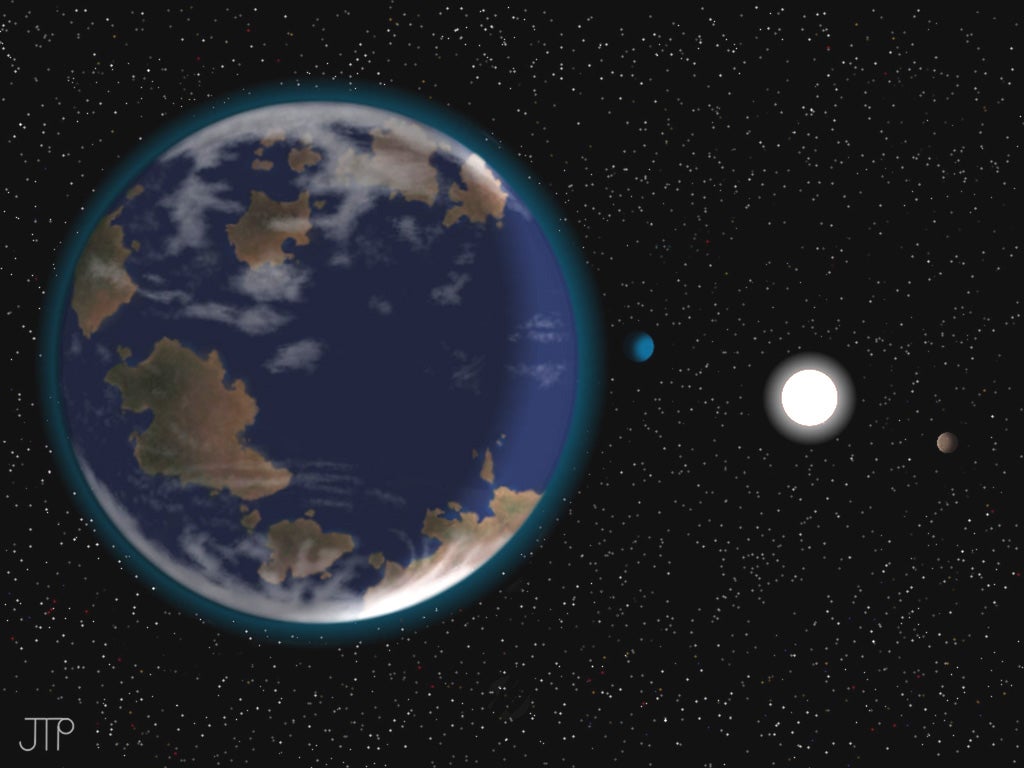A new ‘super-Earth’ has been discovered that could have a life-supporting climate and water.
The planet, given the catchy name HD 40307g, was discovered in a multi-world solar system 42 light years from the Sun and lies at exactly the right distance from its star to allow liquid surface water.
It orbits well within the star's “habitable” or “Goldilocks” zone - the region where temperatures are neither too hot nor too cold to sustain life.
Professor Hugh Jones, from the University of Hertfordshire said: “The longer orbit of the new planet means that its climate and atmosphere may be just right to support life.”
”Just as Goldilocks liked her porridge to be neither too hot nor too cold but just right, this planet or indeed any moons that is has lie in an orbit comparable to Earth, increasing the probability of it being habitable.“
The ‘super earth’ is one of six planets believed to circle the dwarf star HD 40307 in the constellation Pictor.
All the others are located outside the habitable zone, too close to their parent star to support liquid water.
Three of these were originally identified in 2009 by European Southern Observatory astronomers who used an instrument called Harps (High Accuracy Radial Velocity Planet Searcher) that reveals planets by detecting changes in starlight colour.
A new analysis of the Harps data has now revealed three more super-Earths – with HD 40307g exciting astronomers considerably more than the others thanks to its greater distance from its star.
Scientists believe the planet turns on its axis, giving it a regular day and night cycle and making its environment even more Earth-like.
Planets orbiting too close to their stars risk being ”tidally locked“ so they always have the same face pointing towards the star.
In the same way, the Moon always has its nearside facing the Earth. One side of such a planet is likely to be scorching hot while the other is dark and cold.
Scientists doubt that tidally locked planets could be habitable.
Like many other extra-solar planets, HD 40307g was found by observing wobbles in the motion of its parent star caused by the tug of its gravity.
The wobbles stretch or compress the wavelength of light from the star as seen from the Earth, making it redder as it moves away and bluer as it comes closer.
Analysing these patterns can provide information about the planet's mass.

Join our commenting forum
Join thought-provoking conversations, follow other Independent readers and see their replies
Comments